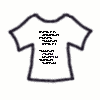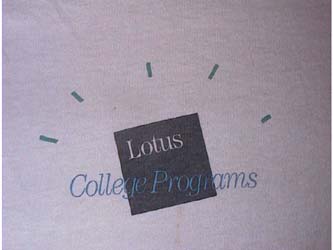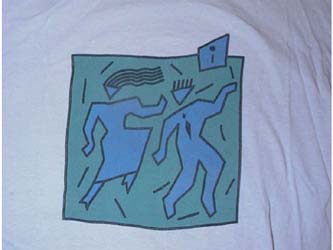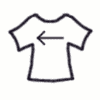
"Product Support, this is Lilly. How may I help you?"


|
"Product Support, this is Lilly. How may I help you?" |

|
 |
 |
I spent two wonderful summers as a college intern working for Lotus Development Corporation in Cambridge. Lotus was still basking in their 1-2-3 spreadsheet glory years and I experienced the joys of an ideal company culture. There were free soft drinks, a cafeteria you couldn't get bored with, a beer cart on Fridays, and happy employees. Beyond those tangible rewards was the feeling that the company really did care about you and the world you lived in.
I worked in Product Support my first summer there, spending about six hours each day on the phone fielding questions about Lotus 1-2-3. I loved that job. If I had had to do it for more than those three months I would have become disillusioned and burnt out, but a summer was the perfect length of time for me to experience that type of career. Spreadsheets are used in every industry you can name, and I fielded calls from scientists, lawyers, students, people in gargantuan corporations, people running businesses out of their homes, a female Naval officer stationed on a base somewhere on the coast, and even someone a few floors down in Lotus' own accounting department. Each afternoon I would run up to the cafeteria and get a large (and free!) ginger ale to help my throat through the remainder of the day. My assigned mentor, Amy, was the sweetest person I have ever worked with. She had a perfect phone voice; they had her record the introductory phrases we heard before a call came through, so as I prepped myself for each call, I would hear her soothing tones telling me what type of customer I was about to speak with.
What I loved most about working in support was the phones. The Aspect phones we used were designed unlike any phone I had seen before. There was a digital display and lots of buttons. The phone kept track of the number of calls you had made, their length, your longest call, average call time, and many other statistics. When you dialed a number, it didn't go out immediately, but you could see it on the display and correct it before you began the call. It also would display who was calling you and their extension (for internal calls). I hadn't heard of Caller ID back then, and this was a new and wonderful technology to me. Another interesting feature was the small LED on each phone. This light indicated how many people were on hold on the support line. Green indicated that no one was waiting, and the light would change color to yellow and then deepening shades of orange as more people called in for help. The light was rarely green. I often answered a call to find a customer who needed to be calmed down after their lengthy wait. However, the number of phone lines that the phone system could actually support was much higher than the number of people they let through. Since they knew that it was a bad idea to keep too many people on hold, they had callers reach busy signals after a certain volume had been reached. One day, as a research project, they decided to open up all the "trunk" lines so they could get an idea of how many calls were actually being made to the support line (there being no way to track how many people were getting busy signals). That was the day that I found out the light on the phone could go to red! Most days I handled 30-40 calls. That day I took 66 calls. You could feel the energy and tension across the floor as everyone tried their best to give equal, patient attention to frustrated customers who had been waiting on hold for hours. I learned a lot about "grace under pressure" from that day.
I have my share of the usual humorous anecdotes about people who call in for technical support, but a small summary is probably best here: asking a guy if he had a color monitor only to hear him reply "I don't know, I'm colorblind", the guy who told me my voice had a "northeastern twang", my first encounter with the wonderful friendliness of Texans, a guy who responded to my greeting with "well, you could get me a cup of coffee; I've been on hold for two hours!", teaching someone how to use DOS edlin over the phone (edit didn't exist yet), reading printer command codes over the phone ("the @ symbol, above the number 2 on your keyboard, the ampersand, over the number 7..."), the list goes on.
I wonder a lot about how the culture of Lotus has changed nowadays, especially after being folded into IBM. I hope the answer is "not much", but the company certainly is not what it was when I was there. My second summer as an intern, I worked in technical marketing, my first job where someone paid me to program. A round of layoffs was announced while I was there, and someone in my group was let go. It was a harsh lesson to keep for the future. But I still enjoyed my summer, learned C, and had lunch every day with my friend Mary Flynn who was working in Investor Relations. That was also when I was first exposed to the Borland user interface copyright suit, which opened my eyes to a whole new way of looking at the computer industry and the work of the League for Programming Freedom (yes, I have one of their t-shirts too).
I love the artwork on the back of this T-shirt. All the college interns got one during a farewell picnic my first summer at Lotus. They also gave each of us a free copy of Lotus 1-2-3 ver 2.2. Some days I have flashbacks to being on the product support phone and I hear myself reciting "OK, now hit the slash key to bring up the menu." Ginger ale has never tasted as good as it did back then.

|

|
| Lotus Development Corporation |
| The League for Programming Freedom |